Advertiser content
Direct drilling: Overcoming emotional pressures of change
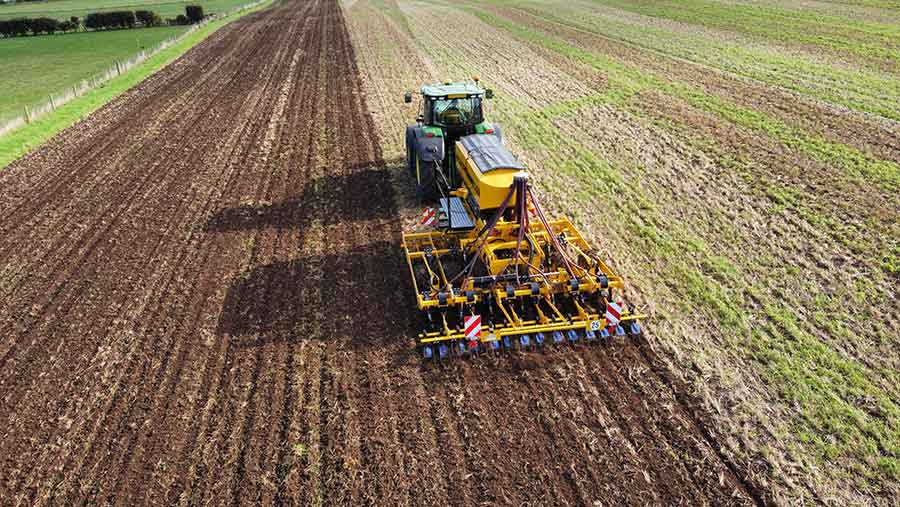 Conventional to regenerative agriculture: “a leap of faith” © Claydon
Conventional to regenerative agriculture: “a leap of faith” © Claydon Change isn’t easy. The psychological pressures of making the transition from conventional crop establishment to direct drilling and regenerative agriculture should not be underestimated.
Regardless of the depth of your research and number of visits you have made to reference farmers, the “leap of faith” still has to be made.
We hear from farmers who overcame their concerns and doubts and made a successful transition to direct drilling.
Judging by appearance
Completely changing your crop establishment system can be a daunting prospect, particularly if you are moving from conventional ploughing and power harrowing to direct drilling.
Not only is there new technology to get to grips with, you will also have your freshly sown crops in public view. Neighbours will be curious. You will be watched.
For a first time direct driller, your freshly seeded field may take a bit of getting used to.
Gone will be the swathes of uniform, brown soil to be replaced by stubble fields.
Some may think it untidy and others may think you have yet to drill it – and your fields are there for all to see, while you watch impatiently for crops to emerge.
Fourth-generation Suffolk farmer, James Harris, switched from plough-based to Claydon direct drilling in 2020 on his 1,800 acre farm.
He admits that the appearance of his fields was something that took some adjusting to.
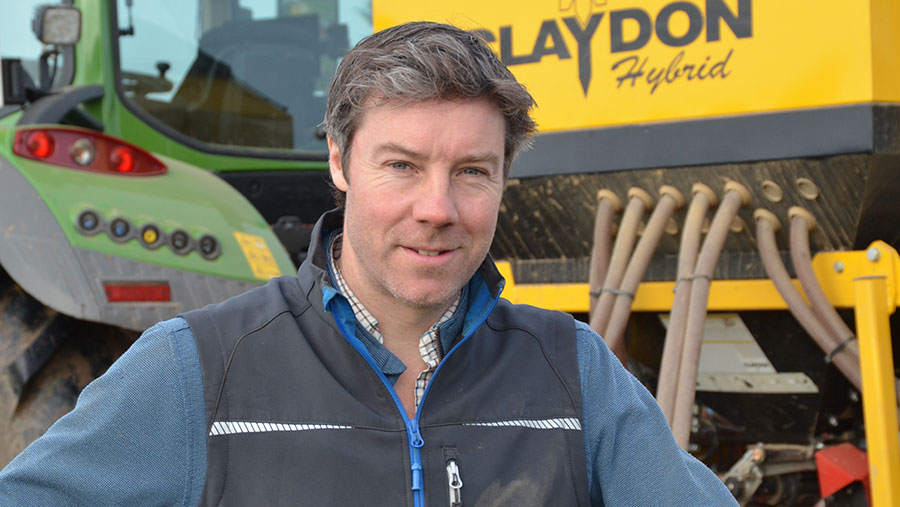
James Harris, Suffolk farmer and direct-driller since 2020 © Claydon
“We had always been used to seeing perfectly brown seedbeds with no straw showing, followed by even, narrow crop rows. It was the visual aspect of the new system which was perhaps the hardest thing for my father and me to get used to. Even after drilling, the fields looked just like stubbles. It takes time and thought to change to a new system”.
James Harris
Rick Davies farms 440 hectares in Buckinghamshire. In 2012, he switched from conventional min-till to direct drilling. Initially he was also concerned by the appearance of his direct-drilled fields.
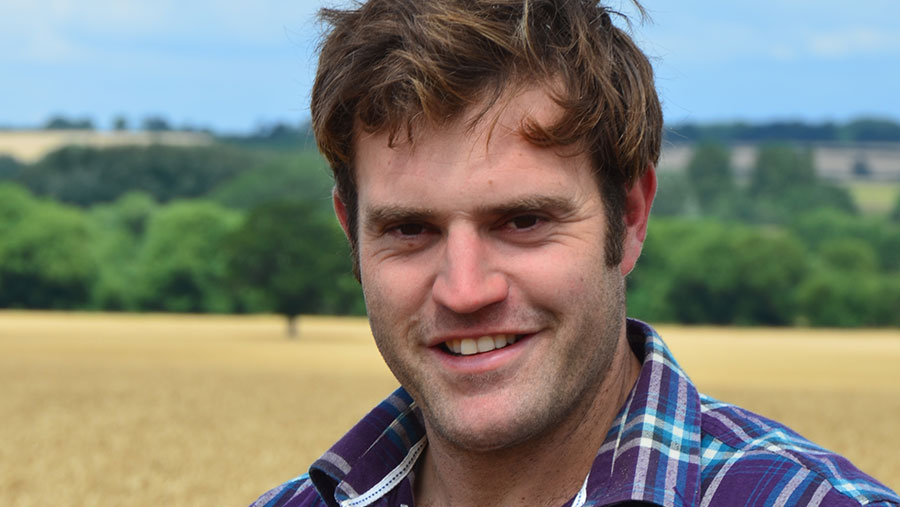
Rick Davies, long-term direct driller since 2012 © Claydon
“Having used conventional cultivations and become used to seeing perfect-looking seedbeds for so many years, moving to the Claydon system was a huge leap of faith and it took time to get used to the idea that it would look different. But the results prove that you can’t judge a crop by its initial appearance and what really counts is how much goes into the combine tank.”
Rick Davies
It is reassuring to note that while the stubbles may not look pretty, they are doing a good job of anchoring soil in place, protecting it from erosion and adding organic matter and fertility.
The stubbles will break down and the crops will soon grow over them.
Autumn-drilled crops usually get away fast into moisture. Spring-drilled crops are slower to get away but they soon catch up and can overtake conventionally drilled crops.
As season follows season and harvest follows harvest, a stubbly field will soon begin to look less alien and, as yields should be unaffected, all the benefits of direct drilling should outweigh initial visual concerns.
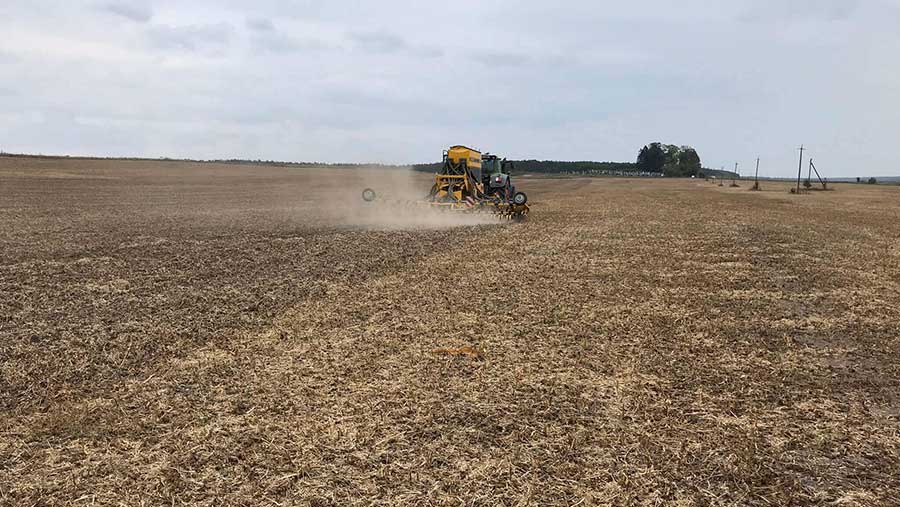
Drilling into stubbles; some may view the appearance as untidy © Claydon
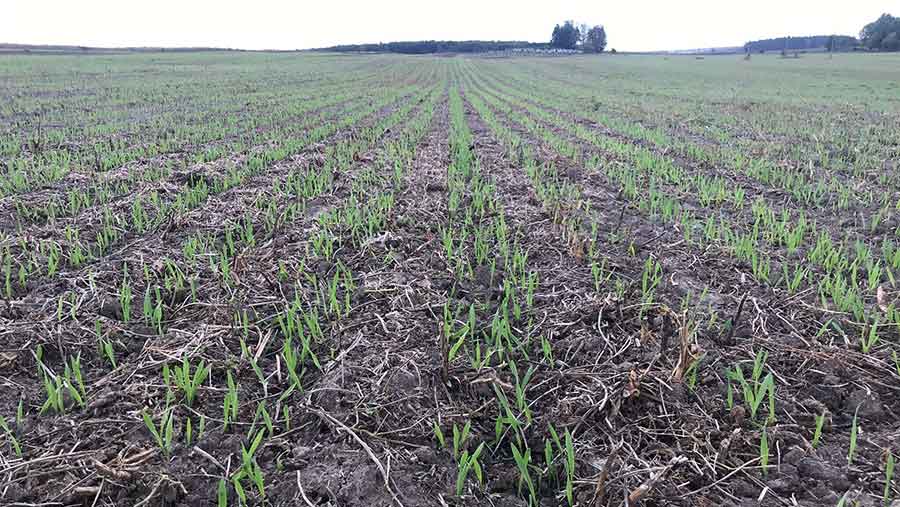
Direct-drilled crops soon emerge © Claydon
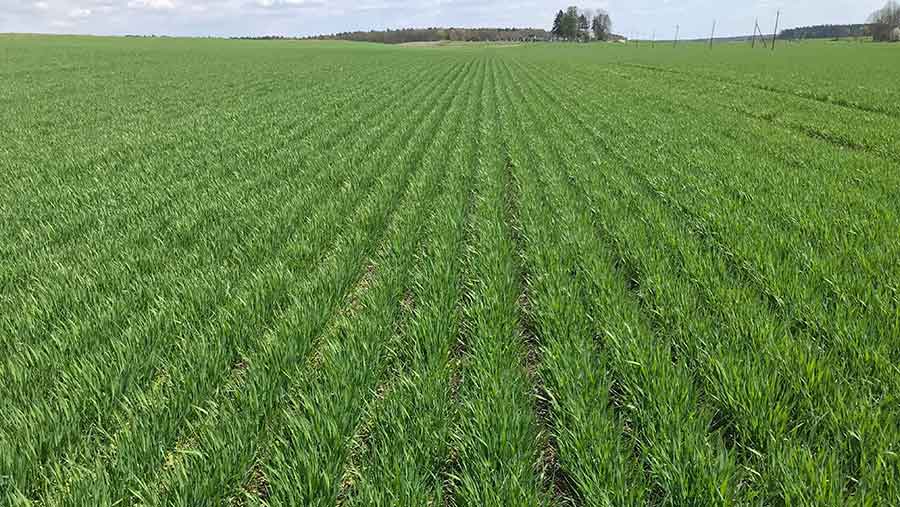
Direct-drilled crops growing through stubbles © Claydon
Family pressures
If you have been conventional drilling for many years, using a system tried and tested by previous generations, there may be resistance from family members to make the change to regenerative agriculture.
The pressure for “carrying the can” for anything but a success with the new system may weigh heavy.
James Harris was initially doubtful of the move to direct drilling when his father suggested it.
“My father has always liked to try new ideas, but even though we had heard good things about Claydon Opti-Till®, I was still sceptical when he arranged for a drill to be demonstrated. Conditions weren’t easy in the spring of 2019, but after drilling 75 acres of spring barley with a 4m trailed Claydon we had a reasonable crop. I became interested in this approach.”
James Harris
A demonstration is a valuable option for those considering changing system.
It is an opportunity to examine establishment on your own soils and see how the drill deals with your conditions.
Dealers will be able to run through the set-up and calibration of a machine whilst germination can be viewed.
Exploring with a trowel will uncover rooting and plant development.
Pub talk and misconceptions
You may hear a range of comments when switching crop establishment system; direct drilling won’t work on your soil, in your climate, yields will suffer etc.
These comments may play in the back of your mind like an unwelcome ear worm.
It is often the case that those most critical of direct drilling are those who will be most surprised at your crop establishment and may end up asking you to drill some fields, or even purchase a drill themselves.
It frequently happens.
Robert Rooke farms 1,200 acres in Yorkshire and switched from plough-based to direct drilling in 2018.
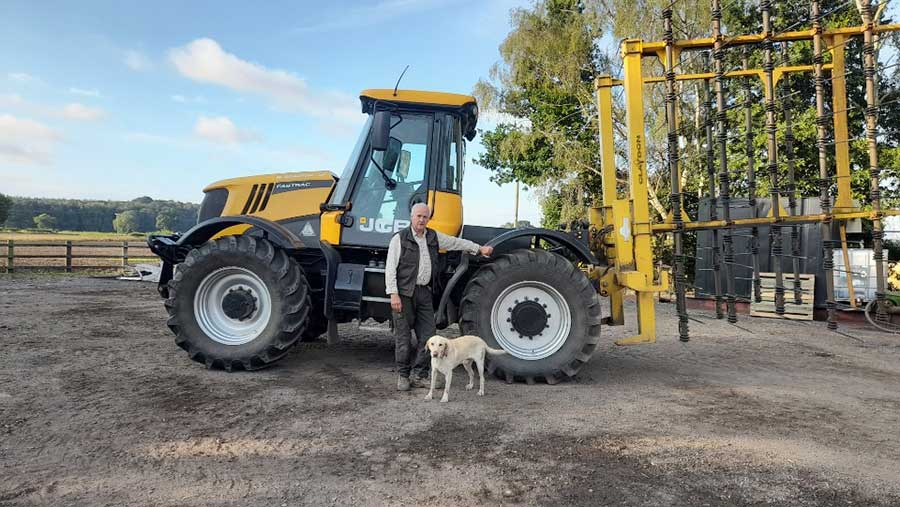
Robert Rooke, direct driller since 2018 © Claydon
“Claydon Opti-Till® is a totally different way of farming. Initially we didn’t have the experience to trust it fully. Neighbouring farmers were sceptical and didn’t think it would work on heavy land, but since then several have bought Claydon drills. Changing to Claydon Opti-Till® has been transformational”.
Robert Rooke
Wayne Turnbull, also from Yorkshire, farms 400 hectares near Driffield. He moved from conventional plough-based to direct drilling in 2018.
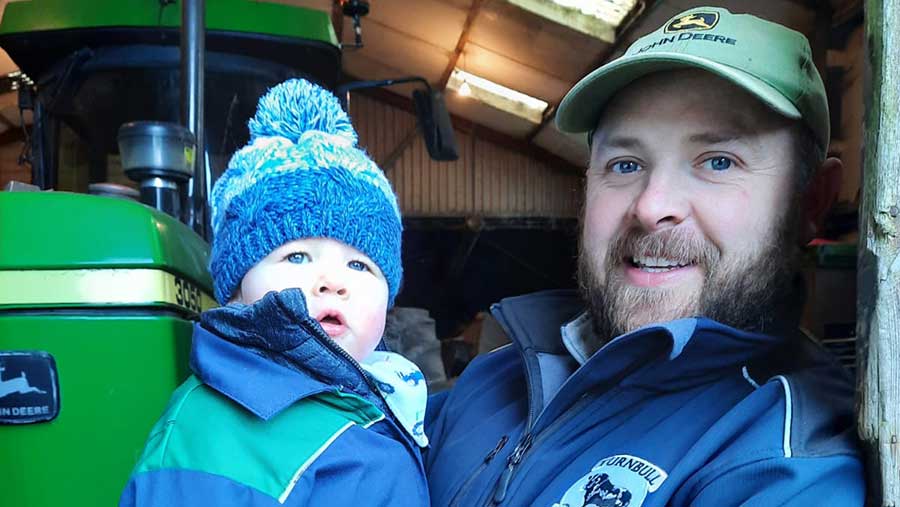
Wayne Turnbull (and son!) switched to direct drilling in 2018 © Claydon
“When I was thinking of changing to the Claydon Opti-Till® direct seeding system many people had an opinion. Comments ranged from ‘you won’t be able to go when it is wet’ to ‘you’ll get a lot of weed issues’, but none had tried it for themselves and were in no position to judge.”
Wayne Turnbull
Progressive seasons of direct drilling have now made his fields freer draining as soil health has improved.
At the same time, establishment costs have been slashed and yields have been maintained. With an increase in extreme weather events, having more time to choose when to drill is a great benefit.
Cheating
Ploughing or min-till crop establishment is labour intensive.
Time saving with direct drilling is significant so you may be left feeling lost without the same workload as before if you haven’t made alternative plans.
Richard and Matthew Bray from Worcestershire farm 1,000 acres and moved from plough-based establishment to direct drilling in 2013.
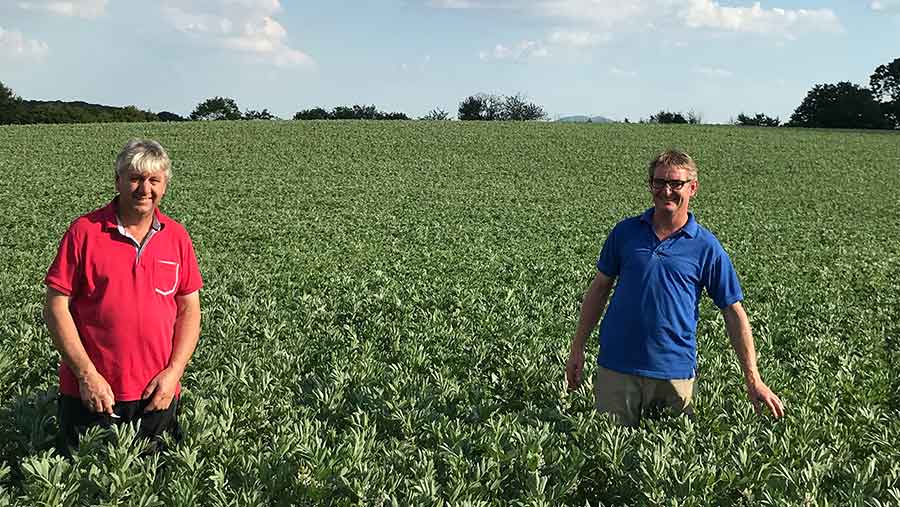
Matthew and Richard Bray, have been direct-drilling on their farm since 2013 © Claydon
“The old-school approach is to believe that the more time and effort it takes to do a job the better the outcome, but when it comes to establishing crops that is definitely not the case. By using the Opti-Till® system I almost feel that somehow I am cheating, but the cost savings have transformed the profitability of the business, our soils and soil biology have improved immeasurably, while the huge time savings have transformed the quality of our working and family lives at peak times…just knowing that we have the capacity to easily cover all the ground in a timely fashion takes a lot of the stress out of the job.”
Richard Bray
Having more time free can also allow you to explore other revenue streams to augment income and increase the financial sustainability of your business.
Support and reassurance
If you are the first considering direct drilling in your area, you may feel like you are ploughing a lone furrow (excuse the pun).
Apprehension is understandable when moving away from traditional methods to regenerative agriculture.
But you are not going it alone; there are many others with you on your journey, at all its different stages.
Professor Anna Krzywoszynska, Environmental Social Scientist at the University of Oulu in Finland, delivered a powerful presentation on regenerative agriculture at this year’s Groundswell event.
She talked about the vulnerability and alienation farmers may feel when changing their ideas and doing something radically different: How do you complete this shift not only in practice but also in identity?
She emphasised the need for farming communities, for support and reassurance for growers making the change to regenerative agriculture.
She stressed the psychological importance of being part of a community and exchanging ideas with other like-minded people seeking to do things differently.
Thinking of taking the leap?
9 tips to help you take the plunge:
- Decide why you want to change system. Remind yourself of your reasons and don’t lose sight of them
- Do your research and learn as much as you can about your new system so you are confident in your own knowledge and reasoning
- Meet local users/read customer testimonials and find out about their experiences to get the real story
- Visit manufacturers’ factories and farms
- Get to know your local dealer and ask for a demonstration
- Have a few acres contract-drilled – make it a fair demo and don’t pick your worst field in your worst area
- Visit shows and specialist regenerative agriculture events like Groundswell – you can learn a lot by attending presentations, viewing machinery and chatting to like-minded farmers
- Sign up to a user group, exchange ideas and get advice from fellow users
- Watch set-up and calibration videos and contact your local dealer for advice so you are confident in using your drill
There is safety in numbers and you are not alone.
There are other growers just starting their direct drilling journey and others who have completed the transition successfully, who have had similar concerns and doubts, but are now many seasons into Claydon Opti-Till® crop establishment.
To hear more from users visit the Claydon website.
Provided by
Establishing a better way
